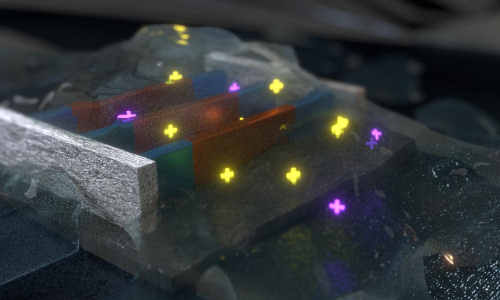A novel, bacteria-repelling coating material that could increase the success of medical implants has been created by researchers.
The material helps healthy cells ‘win the race’ to the medical implant, beating off competition from bacterial cells and thus reducing the likelihood of the implant being rejected by the body.
The first results of the material’s performance have been published today, 30 January, in IOP Publishing’s journal Biomedical Materials.
The failure rate of certain medical implants still remains high—around 40% for hip implants—due to the formation of biofilms when the implant is first inserted into the body.
This thin film is composed of a group of microorganisms stuck together and can be initiated by bacteria sticking to the implant. This prevents healthy cells from attaching and results in the body eventually rejecting the implant, potentially leading to serious complications for patients.
In their study, researchers from A*STAR (Agency for Science, Technology and Research) in Singapore, Nanyang Technological University and City University of Hong Kong produced a material that not only repelled bacteria but also attracted healthy cells.
The base of the material was made from polyelectrolyte multilayers onto which a number of specific bonding molecules, called ligands, were attached.
After testing various concentrations of different ligands, the researchers found that RGD peptide was particularly effective at inhibiting the attachment of bacterial cells and attracting healthy cells, compared with collagen, when attached to dextran sulfate and chitosan multilayers.
This combination was tested on cultures of healthy fibroblast cells and cultures of bacterial cells, in which two specific strains were used—E. coli and S. aureus.
The lead author of the research, Professor Vincent Chan from Nanyang Technological University, said: “The method we developed helped the host cells win the so called ‘race-for-surface’ battle, forming a confluent layer on the implant surface which protects it from possible bacterial adhesion and colonization.
“Medical implants currently have antibacterial silver coatings incorporated into them; however, the total amount of silver used must be very carefully controlled because high concentrations could kill mammalian cells and become toxic to the human body.
“The bio-selective coatings we’ve created do not have this problem as the materials used are non-toxic and the preparation process uses water as a solvent.
“At the moment this is just a ‘proof-of-concept’ study, so there is still a long way to go before the coating can be used on implants in clinical setting. In future studies we hope to firstly improve the long-term stability of the coating.”
Story Source:
The above story is based on materials provided by IOP Publishing.





